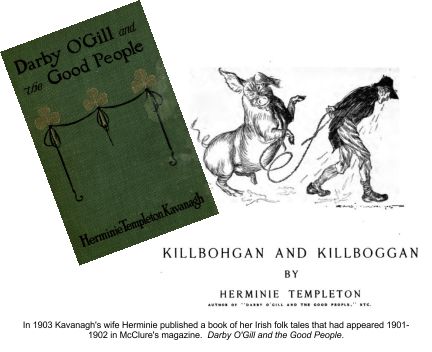|
Kersten and Green gone,
Kavanaugh takes over
The first grand jury had
indicted Iroquois Theater manager
Will J. Davis in February 1904. That
indictment was quashed a year later by judges
George Kersten and Peoria judge
Theodore N. Green. Judge Kersten showed
the prosecution what needed to be changed in the
case for a successful do-over. Based on Kersten's
recommendations a second grand jury issued an
involuntary manslaughter indictment against Davis in
March 1905 and the case was turned over to circuit judge Marcus
Kavanaugh (1859–1937).
Another six months of legal manuevers
Three months later in a six-hour argument made before Kavanaugh in mid June 1905,
defense attorneys petitioned the court to dismiss
the March 1905 manslaughter indictment. Chief
defense attorney
Levy Mayer based his argument on two points: 1.)
the state's case rested on the inaccurate
presumption that Davis owned the theater structure,
and 2.) the fire ordinances in place at the time of
the fire did not make Davis responsible. Judge
Kavanaugh found another flaw in the indictment:
conflicting entities were named in the case.
The company was sometimes referred to as the
Iroquois Theater Company and sometimes as the
Iroquois Theater Amusement Company. Such is the
stuff of appeals. Nonetheless, Kavanaugh took
the motion under advisement.
Try him
On January 24, 1906, despite Mayer's extensive argument and typos, judge
Kavanaugh upheld the involuntary manslaughter
indictment, letting the trial go forward. If found guilty, the
penalty was a prison sentence of one year to life.
Erasmus C. Lindley of
states attorney John Healy's office had argued
that the obligation to provide fire escapes rested
on common law as well as municipal ordinance thus
was not dependent upon enactment by the Chicago city
council, but Kavanagh dismissed the two common law
assertions. In a
lengthy article three days before his ruling,
the Chicago Tribune laid out what Kavanagh would
consider, including a summary of legal proceedings
to that point.
On to Judge Ben Smith
Four days later, Mayer demanded a change of venue for the
trial. (It was the second venue change discussion in
court, the first having been voided in February 1905
when
judge Kersten quashed the state's faultily-drafted
indictment.) Prosecutor Healy objected to a
venue change because of the cost of transporting
many dozens of witnesses. Newspapers suggested
public hostility against Davis had diminished,
citing as examples that the Iroquois building was
back in use as a theater and that demonstrations of
grief and anger at annual gatherings of the Iroquois
Theater Memorial Association were less pronounced.
Six months later,
judge Ben Smith ruled that the venue could be moved.
Kavanagh an interesting character
The son of Irish immigrants, Marcus and Mary Hughes Kavanagh* of
Iowa, he received law degrees from both Niagara and
Notre Dame universities and was admitted to Iowa bar
c.1878. He served as city attorney of Des Moines and
as a circuit court judge.
Kavanagh moved to Chicago in 1889 and went into
partnership with judge John Gibbons and J. V.
O'Donnell. In 1891 took time away from his career to
command the 7th Illinois regiment during the
Spanish-American war, achieving the rank of colonel.
|

|
In 1898 Kavanagh was appointed to the bench in Cook
County by Illinois governor Tanner to succeed judge
John Barton Payne. He was a judge in Cook County
Superior Court from 1898 to 1935. He was one of four
who ran against Carter Harrison Jr. in the 1901
Chicago mayoral election.
With a reputation as a tough-on-crime judge and standing
over six-foot tall, Kavanagh was an imposing figure. Three times
in his career, he imposed the death penalty on men
who had pled guilty and expected lifetime
imprisonment. He was known for his opinion that
attorneys should not defend men they knew were
guilty. After he was invited in 1929 to participate
in the
Wickersham Commission investigation into
criminal justice reform, he became a regular on the
lecture circuit. In 1930 he appeared before the
House of Commons in England to urge lawmakers to
retain capital punishment.
His first wife, married in 1908, was
Herminie McGibney Templeton Kavanagh
(1861–1933), author of Irish folk tales, including
Darby O'Gill and the Good People in 1903 that
fifty-six years later became the basis for a
Disney film by the same name (trailer).
After her death, at age seventy-five, he married his
twenty-seven-year-old secretary of six months,
former model and stenographer Jeanne Velma Latour.
In 1910 Marcus authored an anti-Darwin pamphlet,
"Proof of Design in Creation," and in 1928, a book
about crime, The Criminal and His Allies. In 1911 he ruled that fingerprints were admissible evidence — a historic
first.
Kavanagh retired in 1935 and moved to Hollywood,
California, where he died two years later.

|
